The team here at Adventures in YA Publishing is excited to announce a new monthly column! Starting next month, we'll be highlighting an author and publisher in our Who's Making Waves in Publishing highlight. But we'll do this in a personal and in-depth way by hosting an interview or dialogue between one of the publisher's authors and their editor.
The interview will focus both on the editing process and the publisher's vision for their books. Our aim is to give writers insight into what happens in publishing from the inside.
So be sure to check back at the end of every month to see what exciting new ventures are happening within publishing!
-- posted by Susan Sipal, @HP4Writers
Viewing: Blog Posts Tagged with: statue, Most Recent at Top [Help]
Results 1 - 8 of 8
Blog: Adventures in YA Publishing (Login to Add to MyJacketFlap)
JacketFlap tags: Publishing, Editor Interview, Add a tag
Blog: Adventures in YA Publishing (Login to Add to MyJacketFlap)
JacketFlap tags: Editor Interview, What Editors Want, Add a tag
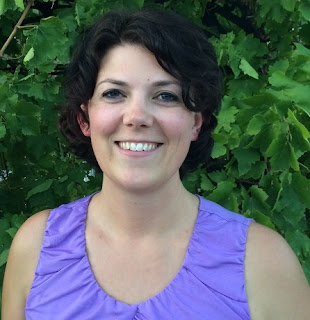 Even though she didn’t know it, Jen Ryan has been editing since she was a young girl. Much to the chagrin of her teachers, she’d often point out errors in her textbooks. Combining that sharp eye for detail with her love of books and the skills she learned through her formal education, Jen took it to the next level. She has established herself as an exacting editor, with a growing reputation for excellence.
Even though she didn’t know it, Jen Ryan has been editing since she was a young girl. Much to the chagrin of her teachers, she’d often point out errors in her textbooks. Combining that sharp eye for detail with her love of books and the skills she learned through her formal education, Jen took it to the next level. She has established herself as an exacting editor, with a growing reputation for excellence.Jen teaches English composition and writing at her local college. She also owns and runs her own editing company, in addition to being one of two partners in Ellysian Press.
Jen lives in the high desert of Southern Nevada with her husband, three children and assorted animals. She loves transforming fruit and vegetables into healthy (and sometimes decadent) jams, jellies and preserves. Her pumpkin butter is to die for.
You can find her editing website here: http://imaginethatediting.com/.
The Ellysian Press website is: http://www.ellysianpress.com/.
You can also follow Jen on social media:
Jen on Facebook
Jen on Twitter
Blog: Adventures in YA Publishing (Login to Add to MyJacketFlap)
JacketFlap tags: Editor Interview, Add a tag
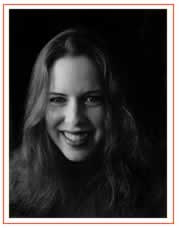 LIESA ABRAMS joined Simon & Schuster in 2006, editing for both the Aladdin and Pulse imprints. At S&S, Liesa launched Rachel Renee Russell's #1 bestselling DORK DIARIES series and Brandon Mull's #1 bestselling BEYONDERS series, as well as Lisa McMann's bestselling UNWANTEDS series. Liesa started in children’s publishing in 1997 at the company now known as Alloy Entertainment, editing classic YA series like Sweet Valley High and developing new properties such as Nine Lives of Chloe King. She left Alloy in 2003 to become a founding editor of Penguin’s Razorbill imprint, where she edited YA titles including R.A. Nelson’s Teach Me and Maureen Johnson’s Devilish. Follow Liesa on Twitter @batgirleditor to hear all you need to know about Batman, comics, and gluten-free treats.
LIESA ABRAMS joined Simon & Schuster in 2006, editing for both the Aladdin and Pulse imprints. At S&S, Liesa launched Rachel Renee Russell's #1 bestselling DORK DIARIES series and Brandon Mull's #1 bestselling BEYONDERS series, as well as Lisa McMann's bestselling UNWANTEDS series. Liesa started in children’s publishing in 1997 at the company now known as Alloy Entertainment, editing classic YA series like Sweet Valley High and developing new properties such as Nine Lives of Chloe King. She left Alloy in 2003 to become a founding editor of Penguin’s Razorbill imprint, where she edited YA titles including R.A. Nelson’s Teach Me and Maureen Johnson’s Devilish. Follow Liesa on Twitter @batgirleditor to hear all you need to know about Batman, comics, and gluten-free treats.What title are you most proud of and how did you find the author?
This is a trick question! Obviously I’m proud of every book I’ve edited, and for so many different reasons. Every time I edit a book that I know can be a lifeline to a young reader (as books once were for me), I’m proud. And I’m well aware that those lifelines come in many forms—great fantasy stories can offer escape from difficult realities, while powerful novels about intense issues can make a teen experiencing them feel less alone.
There is one book I can mention specifically, for a really personal reason: Milo by Alan Silberberg. It’s a hybrid novel (text and art) about a boy whose mother has died and his efforts to keep her memory present for himself and his father and sister. One review for the book was from a parent whose husband had died, and she said that she read the book together with her young son, and that at one point she started to cry and her son picked up the book and continued to read. Knowing that Alan’s story was able to be a comfort to a child suffering the worst loss imaginable just floored me. My husband’s mother died when he was about the same age as the character Milo, and I knew how much a book like this would have meant to him. Truly, I edited this book for the child my husband once was. Alan and I were especially proud that Milo won a HUMOR award—the fact that a story about a kid losing his mom could win an award for humor reflected the way we’d managed to produce a book that really represents the truth of life and how sad and funny go hand in hand.
Great answer!! Sorry to throw you such a tough question! How important are trends when considering work?
If there is an incredible manuscript written from the heart that happens to capitalize on something current in the zeitgeist, then that’s awesome. 9.9999 times out of 10, however, someone has written to a trend without that true passion—and it shows.
What is more important: character, plot, or world?
I can’t imagine acquiring a manuscript that didn’t work on all three of those levels, but I will say that for any editor I know, it’s the character and voice that make us truly fall in love with a book. Make me care about the character, and then I’ll care about what that character wants, whatever it is.
Literary or commercial?
It’s like chocolate and peanut butter—not an either/or, but “they’re best together!” There’s no reason a book can’t have a really commercial concept—which is definitely our emphasis in Simon Pulse and Aladdin—paired with literary writing.
What book do you wish you’d edited?
A Tree Grows in Brooklyn.
What’s your favorite part of being an editor?
The thrill of reading an author’s revised manuscript and seeing how the editorial back-and-forth has resulted in a fantastic new draft. There’s a real rush from a brainstorming discussion with an author where we can see how all of our ideas are building off of each other’s and leading to something amazing. I see plots like puzzles and when the pieces start to clearly form and fit together, there’s nothing like that feeling. When an author thanks me for helping make her or his book stronger, it means the world to me.
What would you like aspiring writers to know about the publication process?
So many things!
Wow I hope everyone's paying attention, because that's some amazing advice! How many manuscripts come across your desk via agents and what percentage of those do you acquire?
Blog: Adventures in YA Publishing (Login to Add to MyJacketFlap)
JacketFlap tags: What Editors Want, Editor Interview, Add a tag
Blog: tall tales & short stories (Login to Add to MyJacketFlap)
JacketFlap tags: Writing Advice, Editor Interview, Editor Comments, Publisher interview, Senior Commissioning Editor, Add a tag
In the final post of Strident Publishing Month, tall tales & short stories talks to Strident Publishing’s Managing Director, Keith Charters and Commissioning Editor, Graham Watson.

Strident Publishing is the publisher of several award winning books including, most recently, Linda Strachan's Spider.
Spider won the 2010 Catalyst Award. The winner is voted for by teenage readers and Spider was chosen as The Book of the Year 2010.
Keith and Graham, welcome to tall tales & short stories and thank you for agreeing to be interviewed.
I’m the Commissioning Editor of Strident. I’ve been in the book trade since I was a teenager and have been involved in every part of the process from commissioning books in publishing houses to selling them over the counter in bookstores. All my heroes were writers, so being an editor is pretty much a dream fulfilled.
It’s to do with history. Before I became a publisher I was an author ( and I still am). And before that I worked in business, running parts of other people’s companies. I always knew that one day I would set up my own business, it was simply a question of what.
By the time my first LEE novel (Lee and the Consul Mutants) was published I had alread
Blog: tall tales & short stories (Login to Add to MyJacketFlap)
JacketFlap tags: Writing Tips, Writing Advice, Editor Interview, Publisher interview, Add a tag
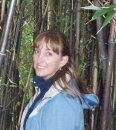
* Hi Holly and welcome to tall tales & short stories.
Could you tell us a little about yourself?
I grew up in Long Beach, California and always had three dreams: to explore the world, to be an archaeologist and to be a writer. I have two degrees in archaeology; my second degree from York was an MA in Medieval Archaeology which led to my settling in the UK as there isn’t much medieval in the US and to be honest, I always was wary about digging up Native American stuff.
I’d written stories since I could hold a pen, but it wasn’t until I moved to the UK that I began to write my first novel (now sitting in a bottom drawer gathering dust…really, it should stay there). I worked in museums and archaeology and kept on writing during my free time. When I had a particularly long lapse between contracts, I penned my second novel, The Faerie Conspiracies, inspired by a spate of extreme bad luck and shadows in the garden. I like to think it was my subconscious kicking my pen into action as the book won the runner up prize in the St John Thomas Awards for self-published authors.
Of course, a few other things happened when I self-published for the first time. I found that I enjoyed the process of seeing a book to print even more than writing and Wyvern Publications was born.
* What inspired you to set-up Wyvern Publications and could you tell us about the company and its philosophy?
When I self-published, I didn’t want to put me as the author, I wanted a company name. I’d seen it done with music when the band or artist was new and unsigned and I liked the look of it. I chose Wyvern because I’m a little nerdy about dragons – having the medieval background probably helped influence that.
You can’t just get one ISBN from Nielsen Data. You’ve got to buy a chunk of ten or more and register your publishing name, even it it’s just yours. I wanted to use the other nine ISBNs too! At first I thought I’d just help others in their road to self-publishing, but as more interested people joined in, the company grew into what it is today (and is still growing).
Wyvern Publications has four branches now. There is Wyvern Publishing which publishes teen fiction, Wyvern Magazine, which produces a writing magazine for teens and writers of teen fiction, Pixiefoot Press publishes children’s fiction, and Wyvern Editing provides an editing service for writers.
We aim to publish quality fiction, even if it doesn’t fall into the mainstream brackets of what a genre should be. Many authors complain that their work is of a high standard, has been recognised as such, but haven’t been signed beca
Blog: The National Writing for Children Center (Login to Add to MyJacketFlap)
JacketFlap tags: Harold Underdown, editor interview, childrens publishing, Complete Idiots Guide to Publishing Childrens Books, Book Bites for Kids, blogtalkradio.com, writing for children, Add a tag
 If you have questions about writing and publishing for children, this week is your chance to get answers to those questions.
If you have questions about writing and publishing for children, this week is your chance to get answers to those questions.
All this week, Harold D. Underdown will be the guest on Book Bites for Kids, every afternoon at 2:00 central time on blogtalkradio.com.
Underdown is a children’s book editor, working as a consulting editor at present. Previously, he was Vice President and Editorial Director at ipicturebooks. Before that, he was editorial director of the Charlesbridge trade program, and he has also worked at Orchard Books and Macmillan. Underdown is the author of The Complete Idiot’s Guide to Publishing Children’s Books, now in its third edition. He speaks at conferences, provides editorial services to publishers and authors, and maintains an informative web site about children’s publishing called The Purple Crayon.
Today (Tuesday) Underdown will talk to Book Bites for Kids host, Suzanne Lieurance, about who he is and what he does, plus he’ll give plenty of information about writing and publishing for children.
On Wednesday he’ll cover basic information any writer needs to know to get started as a children’s writer.
On Thursday, he’ll discuss what happens after a writer signs a contract with a publisher and what it is like working with a publisher.
On Friday, he’ll talk about what’s going on right now in the world of children’s publishing. All this, and much, much more!
Listen to the show at Blogtalkradio and call in during the LIVE show to ask your question or just make a comment at 1-646-716-9239.
Book Bites for Kids, childrens publishing, Complete Idiots Guide to Publishing Childrens Books, Harold Underdown, writing for childrenBlog: Books4Ever (Login to Add to MyJacketFlap)
JacketFlap tags: children's, children's book, family, sun, time travel, coins, judo, statue, Add a tag
The first book in a series, this sets the stage for time traveling done by a teenager. Sam’s dad has disappeared and when Sam goes to his bookstore to find out if he left any clues behind, he discovers a hidden room with a statue. Taking a coin and placing it in the center transports him to another time and place. Soon he is hopscotching through history, but still no sign of his dad. Not overly exciting, this is a more current time travel book than has been seen in awhile and so will appeal to kids who like that. I can only hope the next few get better.



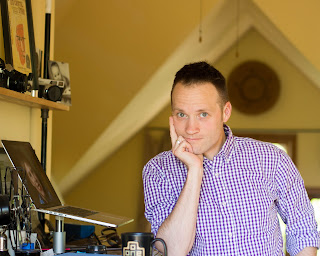



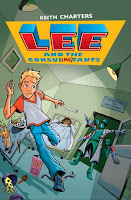

Another great interview Tracy - one line will stick with me:
"I mostly have to decline material that is good, but is not right for us".
When they say that, they really mean it.....